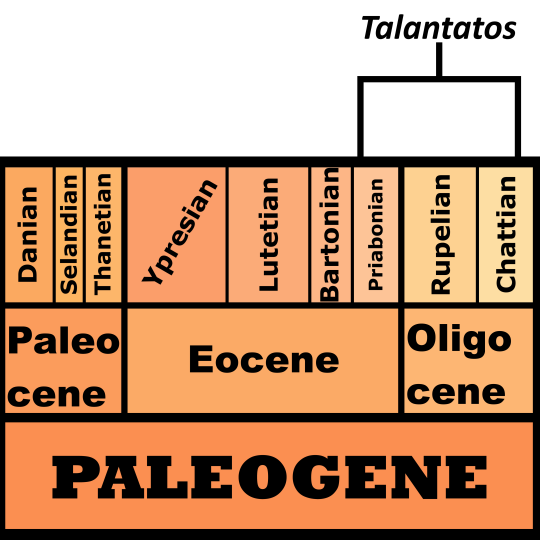#talantatos fossilis
Explore tagged Tumblr posts
Text
Talantatos fossilis

By Scott Reid
Etymology: For Tantalus, a Greek Mythological Figure
First Described By: Reichenbach, 1852
Classification: Dinosauromorpha, Dinosauriformes, Dracohors, Dinosauria, Saurischia, Eusaurischia, Theropoda, Neotheropoda, Averostra, Tetanurae, Orionides, Avetheropoda, Coelurosauria, Tyrannoraptora, Maniraptoromorpha, Maniraptoriformes, Maniraptora, Pennaraptora, Paraves, Eumaniraptora, Averaptora, Avialae, Euavialae, Avebrevicauda, Pygostaylia, Ornithothoraces, Euornithes, Ornithuromorpha, Ornithurae, Neornithes, Neognathae, Neoaves, Inopinaves, Telluraves, Australaves, Cariamiformes
Status: Extinct
Time and Place: From 37.2 million years ago until 24.6 million years ago, in the Priabonian of the Eocene through the Chattian of the Oligocene; all within the Paleogene period


Talantatos is known from a variety of locations in France; including, but not limited to, the Quercy Formation, the Rosières Formation, the Escamps Formation, the Aubrelong Formation, the Ravet Lupovici Formation, the Plante Formation, the Itardiès Formation, the Crabit Formation, the Roqueprune Formation, the Desse Formation, and the Fraysse Formation

Physical Description: Talantatos was a fairly small genus of predatory bird, similar to the Idiornithids. The Idiornithids are a group of seriema relatives from the Paleogene period, which showcased more adaptations for flying than later members of this group and fewer specializations for predatory behavior. As such, the Idiornithids were a fairly transitional group, showing how Seriemas (and their relatives, such as the Terror Birds) evolved their terrestrial, fast, raptor ecology. Talantatos specifically is fairly poorly known, only described off of a few scattered reports of the femur; as such, it’s difficult to determine its specific characteristics and features, though those femur remains were distinctly different from other closely related genera of early Cariamiformes, such as Elaphrocnemus.
Diet: Small animals such as rodents, small birds, lizards, and snakes; potentially supplemented its diet with plant material and insect material, but little is known about how this transitional species showcased the evolution of seriemas and their kin in terms of food
Behavior: Not very well known, given the limited remains; it probably, however, was a mainly terrestrial predator; running to catch food rather than utilizing flight, though it would have been better at flight than modern seriemas or the completely flightless Terror Birds. Probably utilized its feet to hold onto prey, and a sharp beak to attack and then feed upon the prey. It also may have flown large distances to look for prey in its environment. If like modern seriemas, they probably would have lived in small groups or pairs. It is possible that it lived in large flocks, however, given that this behavior is hypothesized for its close relatives.
Ecosystem: During the late Eocene into the Oligocene, the global rainforest was decreasing rapidly, with the Antarctic ice sheet growing over the south pole. This global cooling caused environments to transition to more open plains and temperate climate. As such, Talantatos probably lived in a more seasonal forested environment than its predecessors; if not an open environment like its modern relatives. It lived alongside many other transitional types of dinosaurs, including Quercymegapodes, other pheasants, Trogons, early Hummingbirds, wading birds, other birds of prey, many kinds of early owl, early parrots, and even other early seriema relatives. As such, this time in France showcases the continued evolution of birds towards more modern forms during the end of the Paleogene period.
Other: It is possible that this genus is synonymous with Elaphrocnemus; indeed, it used to have more species, which have since been moved to Elaphrocnemus. However, for now, it seems to be its own sort of dinosaur.
~ By Meig Dickson
Sources under the cut
Mayr, G., H. Alvarenga, J. A. Clarke. 2011. An Elaphrocnemus-like landbird and other avian remains from the late Paleocene of Brazil. Acta Palaeontologica Polonica 56 (4): 679 - 684.
Mayr, G., J. Noriega. 2013. A well-preserved partial skeleton of the poorly known early Miocene seriema Noriegavis santacrucensis (Aves, Cariamidae). Acta Palaeontologica Polonica.
Mlíkovsky, J. 2002. Cenozoic Birds of the World Part 1: Europe. Praha: Ninox Press.
Mourer-Chauviré, C. C. (2004). "Cenozoic Birds of the World, Part 1: Europe". The Auk. 121 (2): 623–623. doi:10.1642/0004-8038(2004)121[0623:CBOTWP]2.0.CO;2.
#talantatos#dinosaur#bird#seriema#carnivore#paleogene#eurasia#palaeoblr#factfile#australavian#talantatos fossilis#prehistory#prehistoric life#dinosaurs#biology#a dinosaur a day#a-dinosaur-a-day#dinosaur of the day#dinosaur-of-the-day#science#nature#terrestrial tuesday#birds
265 notes
·
View notes